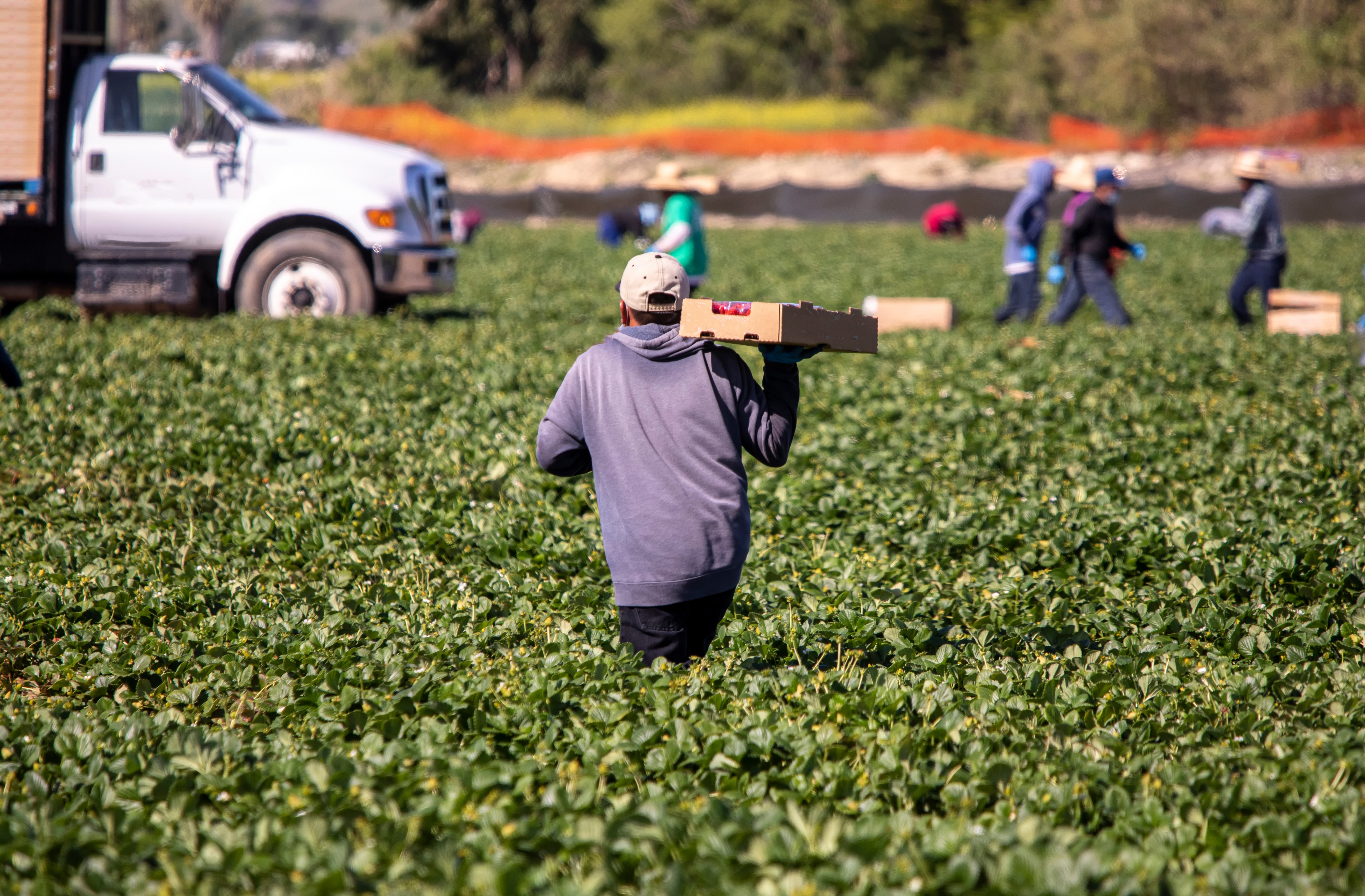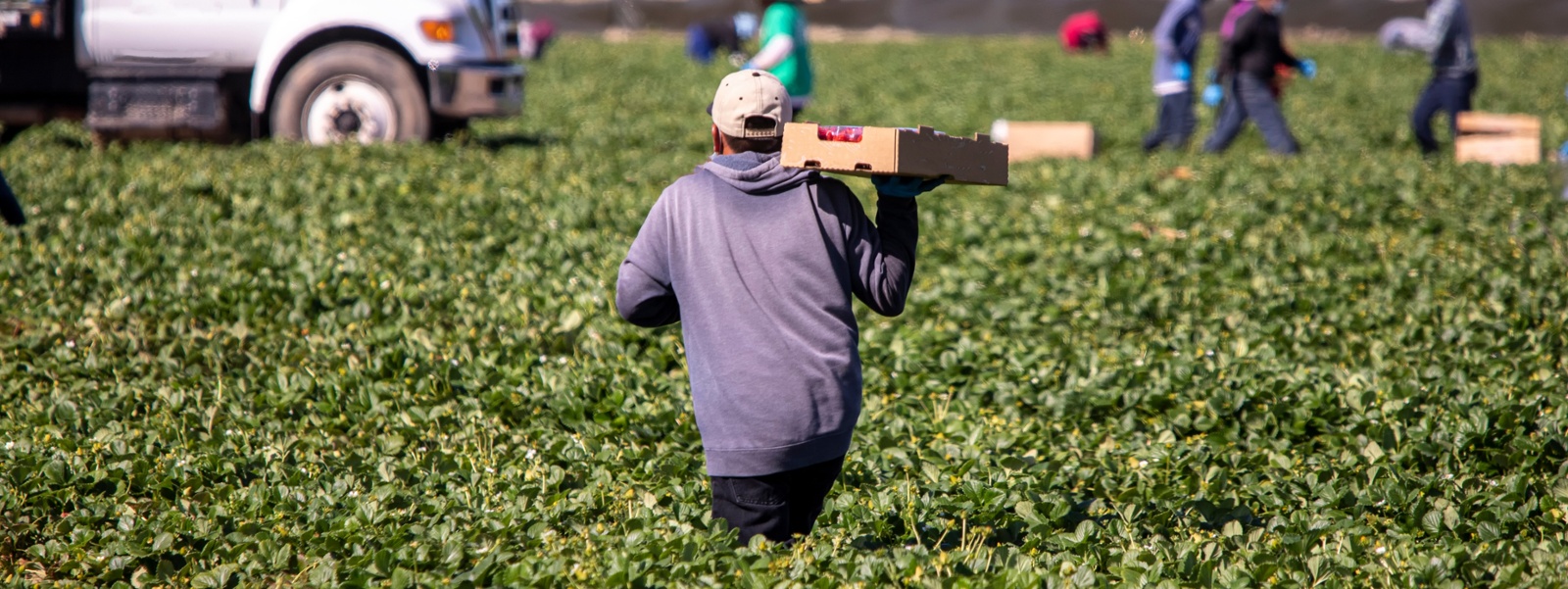Farm labor bills in Congress face a tough path to passage


By Caleb Hampton
More than three decades into a congressional stalemate on immigration reform, a nationwide farm labor shortage has contributed to a flurry of legislative action in Washington this year.
Last month, the House Committee on Agriculture announced it was forming a bipartisan Agricultural Labor Working Group to study and propose changes to the H-2A temporary work visa program, which farmers have increasingly called upon in the absence of adequate domestic labor.
“The Committee on Agriculture has heard loud and clear from producers across the nation that one of the biggest challenges confronting the agriculture industry is a lack of reliable labor,” the committee said in a statement. “This is a complex problem that deserves the focused attention of the Members who hear from producers every day rather than the partisan grandstanding that has plagued these efforts in the past.”
This year, there are around 10 times the number of temporary H-2A farmworkers in California as there were a decade ago. But farm advocates say the program, which may be used only as a last resort when insufficient U.S. workers can be found, is expensive for farms, requires farmers to navigate a burdensome bureaucracy and is limited to seasonal work, putting it out of bounds for the dairy sector and other year-round farm operations.
“Reforms are desperately needed to address this pressing issue,” said working group Co-Chairman Rep. Rick Crawford, R-Arkansas.
Reps. Salud Carbajal, Jim Costa and Doug LaMalfa of California are part of the working group.
The formation of the group follows Congress’ failure last year to pass the Farm Workforce Modernization Act despite backing from worker advocates and some farm groups.
The proposed legislation would streamline and expand the H-2A program, create a “certified agricultural worker” status allowing undocumented farmworkers to legally live and work in the U.S., and establish an electronic verification system, modeled on E-Verify, which agricultural employers would be required to use to confirm employees’ work authorization.
According to some estimates, close to half a million undocumented farmworkers in California could gain legal status under the act, which would create a path to permanent residency for long-term certified farmworkers and their families.
The legislation would also freeze the minimum H-2A wage, called the adverse effect wage rate, for the next year, and limit rate increases over the next decade.
The Farm Workforce Modernization Act has since been reintroduced in the House, but it faces steep odds with Republicans now in control of that chamber.
Meanwhile, two immigration bills with farm labor provisions were introduced in the House. In both cases, the authors have emphasized a bipartisan approach.
In June, Reps. Maria Elvira Salazar, R-Florida, and Veronica Escobar, D-Texas, introduced a new version of the Dignity Act, a sprawling immigration bill that includes the main elements of the Farm Workforce Modernization Act. The bill would also authorize funds for border security, reform the asylum process, create a path to legal status for undocumented immigrants brought to the U.S. as children.
Last week, Tony Gonzales, R-Texas, introduced the HIRE Act, a narrower bill aimed at solving farm labor problems. That bill would extend the length of H-2A visas from one year to three, simplify the application process and open the program to nonseasonal jobs.
The American Farm Bureau Federation, which has not supported the Farm Workforce Modernization Act, endorsed the bill, saying in a statement that it will “make hiring qualified workers easier and enable farmers to continue stocking the pantries of America’s families.”
With the formation of the working group and introduction of new farm labor bills this year, “there is increased attention on this issue” in Congress, said Matthew Viohl, federal policy director for the California Farm Bureau.
But in a partisan environment, including farm labor’s nexus with hot-button immigration issues, can any of the bills become law? “That’s the million-dollar question,” Viohl said. “Realistically, for this Congress, there are slim chances on most of them.”
Yet there may be potential shifts in the political calculus around immigration reforms as labor costs and worker shortages plague businesses in Republican districts.
In May, some Republicans held out on voting for their own party’s border security bill based on its inclusion of a mandatory E-Verify provision that farmers said would decimate their workforce. Earlier this month, a Florida state law cracking down on the employment of undocumented immigrants drew criticism from industry groups for driving farm and construction workers out of the state.
Meanwhile, the rising cost of the H-2A program has “really started to impact some states that have not traditionally advocated for reform,” Viohl said. “A lot of Southeast states are starting to really feel the pinch.”
An implication of that, he said, is the potential for wider recognition that the status quo “is not sustainable.” Already, the Michigan Farm Bureau changed its stance on the Farm Workforce Modernization Act, joining the California Farm Bureau in supporting it. “We have more states that are saying, ‘Hey, we need to do something about this,’” Viohl said.
California farmers have sounded the alarm for years. This year, growers reported, labor contractors in Southern California are scrambling for workers to pick the state’s avocados, offering employees bonuses to recruit friends. In Napa Valley, the harvest of the region’s renowned cabernet winegrapes hinges on employing expensive guest workers.
“At some point,” Viohl said, “we have to have some change.”
(Caleb Hampton is an assistant editor of Ag Alert. He may be contacted at champton@cfbf.com.)




